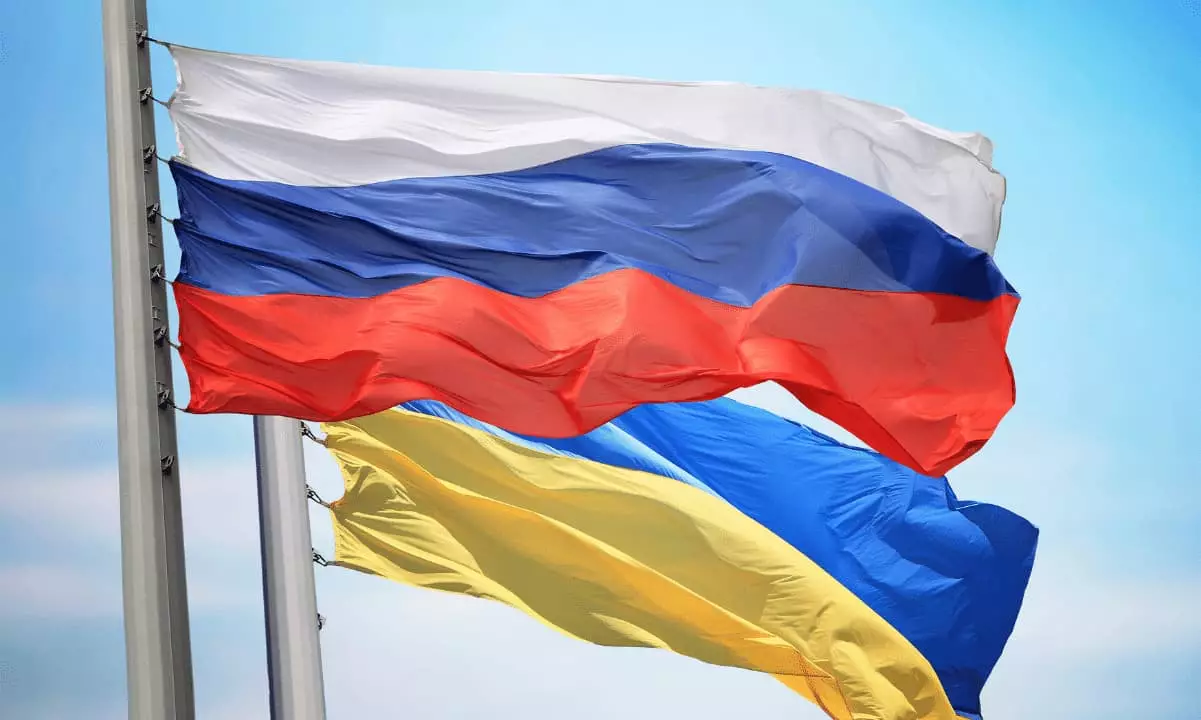In the realm of digital currencies, Ukraine and Russia have emerged as pivotal players, both ranking prominently in the recent Global Crypto Adoption Index. With these two nations securing the sixth and seventh positions respectively, their ascent is notable, particularly against the backdrop of ongoing geopolitical tensions. The latest Chainalysis report highlights a dramatic rise in both countries’ crypto activities, with Russia notably jumping six places in the global rankings. This increase occurs in tandem with the mounting sanctions levied against Russia due to its military actions, making the shift more intriguing.
Eastern Europe has taken the lead in attracting significant crypto inflows, with Russia receiving a staggering $182.44 billion and Ukraine trailing closely behind at $106.1 billion. The region has witnessed a pronounced growth in decentralized exchanges (DEXes) as platforms for crypto transactions, making them instrumental in the shifting dynamics of the global digital currency landscape. Overall, approximately $149 billion flowed into DEX activities in Eastern Europe, showcasing an impressive surge in interest and investment within this sector.
Institutional and Retail Investment Trends
The year also marked a noteworthy distinction in the types of transactions dominating the crypto space. Ukraine experienced an extraordinary 361.49% increase in large institutional transactions—those exceeding $10 million—highlighting an evolving interest from larger investors. This trend indicates that significant players are positioning themselves within the DeFi frameworks to leverage the lucrative opportunities available. On the other hand, consumer behavior in Ukraine showcased a different trajectory. There was an increase of 82.29% in large retail transactions, alongside a staggering 91.99% rise in smaller retail transactions. This grassroots engagement suggests that everyday citizens are increasingly turning to cryptocurrencies as viable options for everyday spending, likely driven by the economic pressures stemming from inflation and ongoing conflict.
In Russia, the crypto landscape is also transforming rapidly. Despite the challenges imposed by international sanctions on traditional banking systems, the emergence of homegrown crypto services has started to fill the gap left by conventional financial institutions. Centralized exchanges have seen stagnant growth, yet interest in Russian-language no-KYC (Know Your Customer) exchanges has surged, enabling users to convert fiat currency into cryptocurrency without stringent verification processes. This shift serves as a critical adaptation to the changing financial landscape, allowing individuals to maintain access to their assets amid growing restrictions.
As Ukraine and Russia maneuver through the complexities of their geopolitical realities, the growth in crypto adoption signals a broader trend that extends beyond mere investment. For many within these nations, cryptocurrency represents a means of preserving wealth, conducting transactions, and possibly finding financial relief in a time filled with volatility. As the world watches these two countries’ approaches to digital currencies, their experiences may offer valuable insights for both regional and global crypto markets in the years to come. The implications of these trends might reshape how cryptocurrencies are viewed and utilized in conflict-ridden environments, ushering in a new era of financial interaction and resilience.

